Kia Kitea Te Waewae TangataFirst Kumera Planting
E. Mervyn Taylor
Type
- Mural
Medium
- Paint
Dimensions
- H1850mm x W2750mm
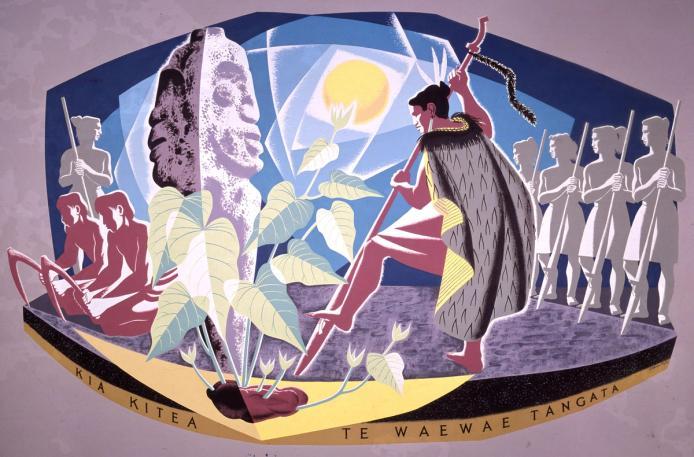
E. Mervyn Taylor, First Kumera Planting mural in situ, Taita Soil Bureau building, Lower Hutt. Image courtesy of New Zealand Society of Soil Science.
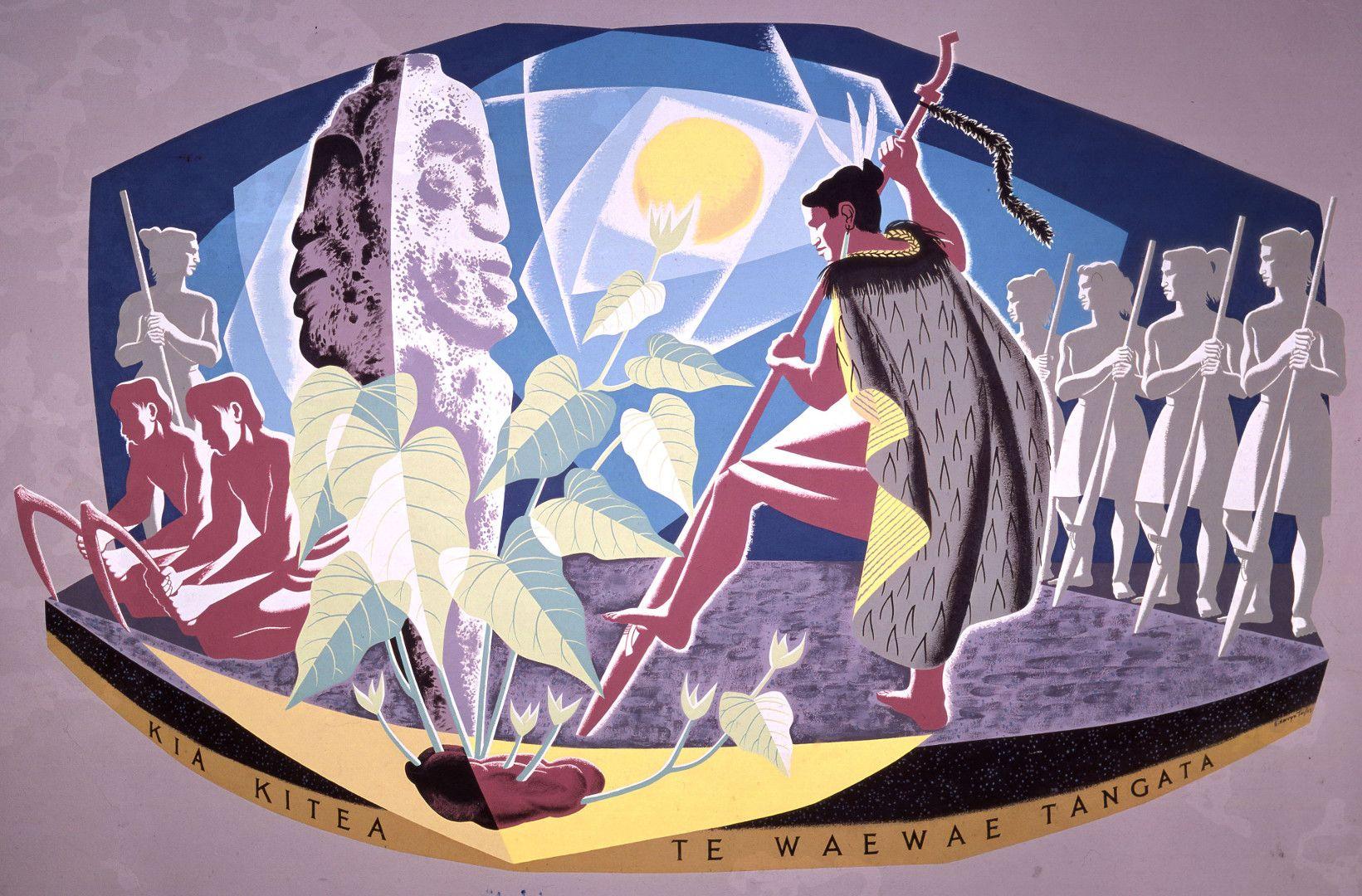
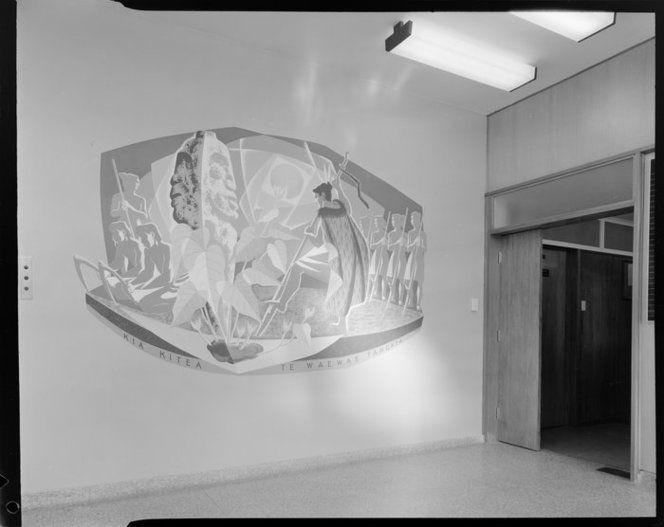
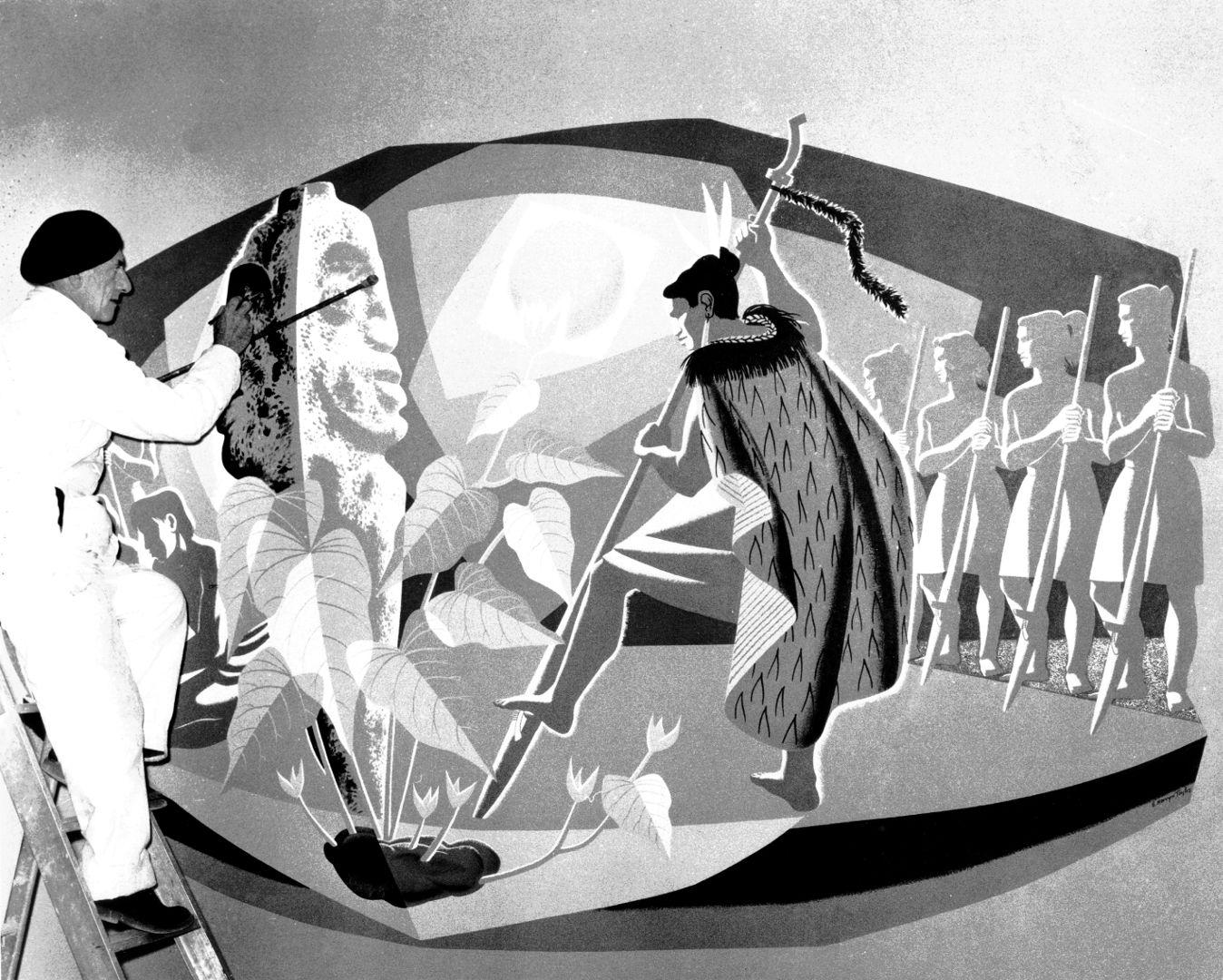
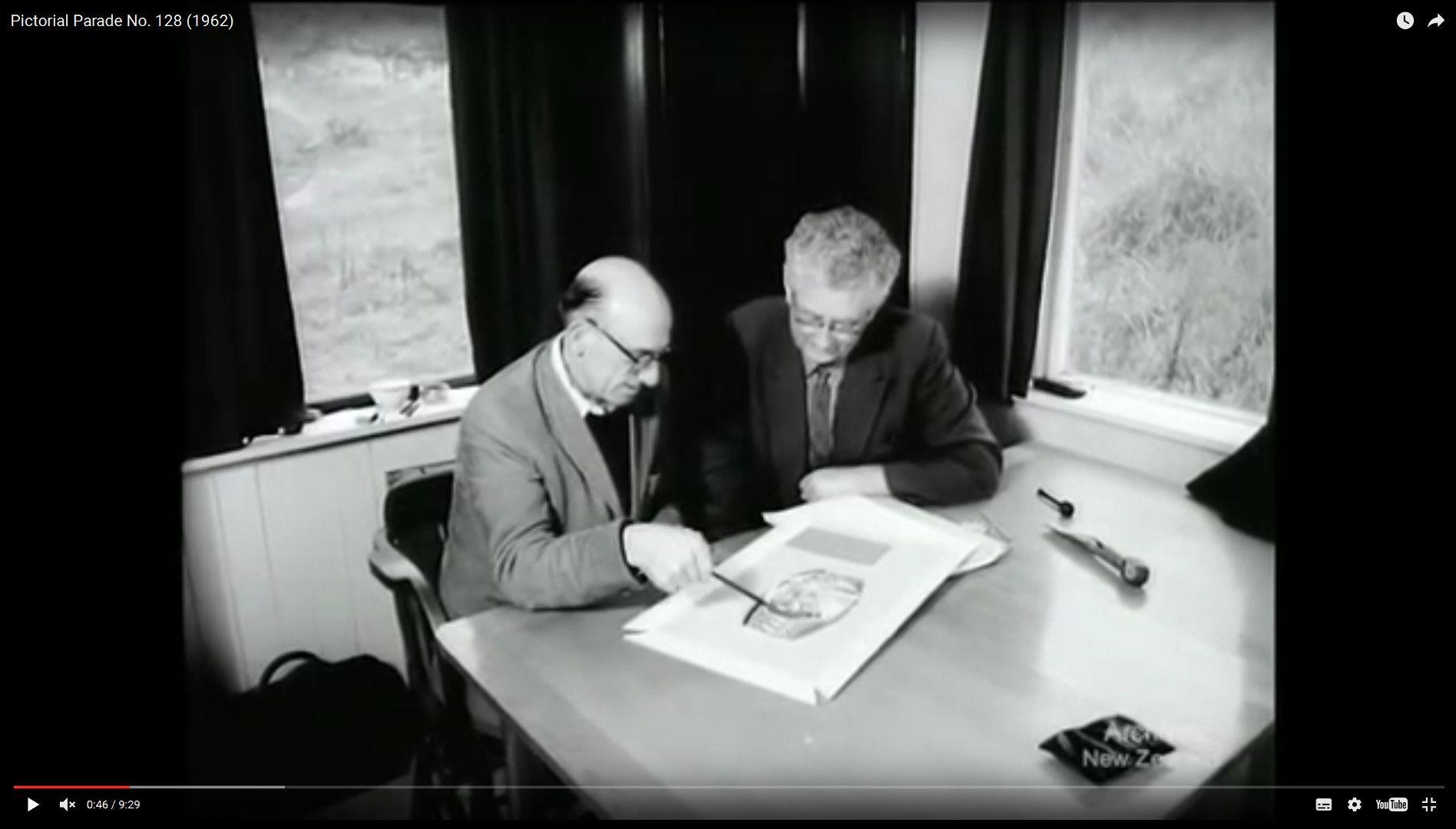
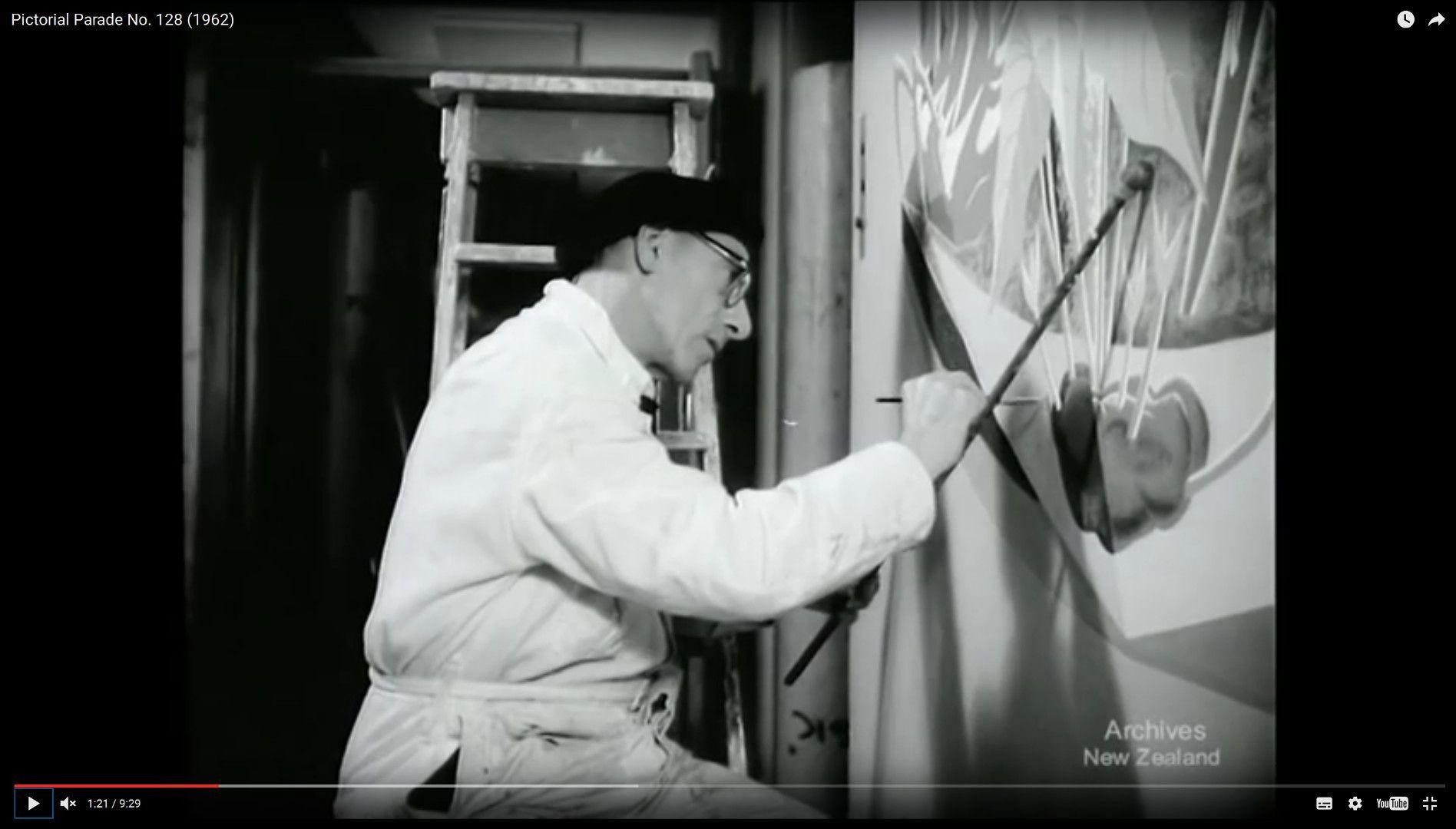
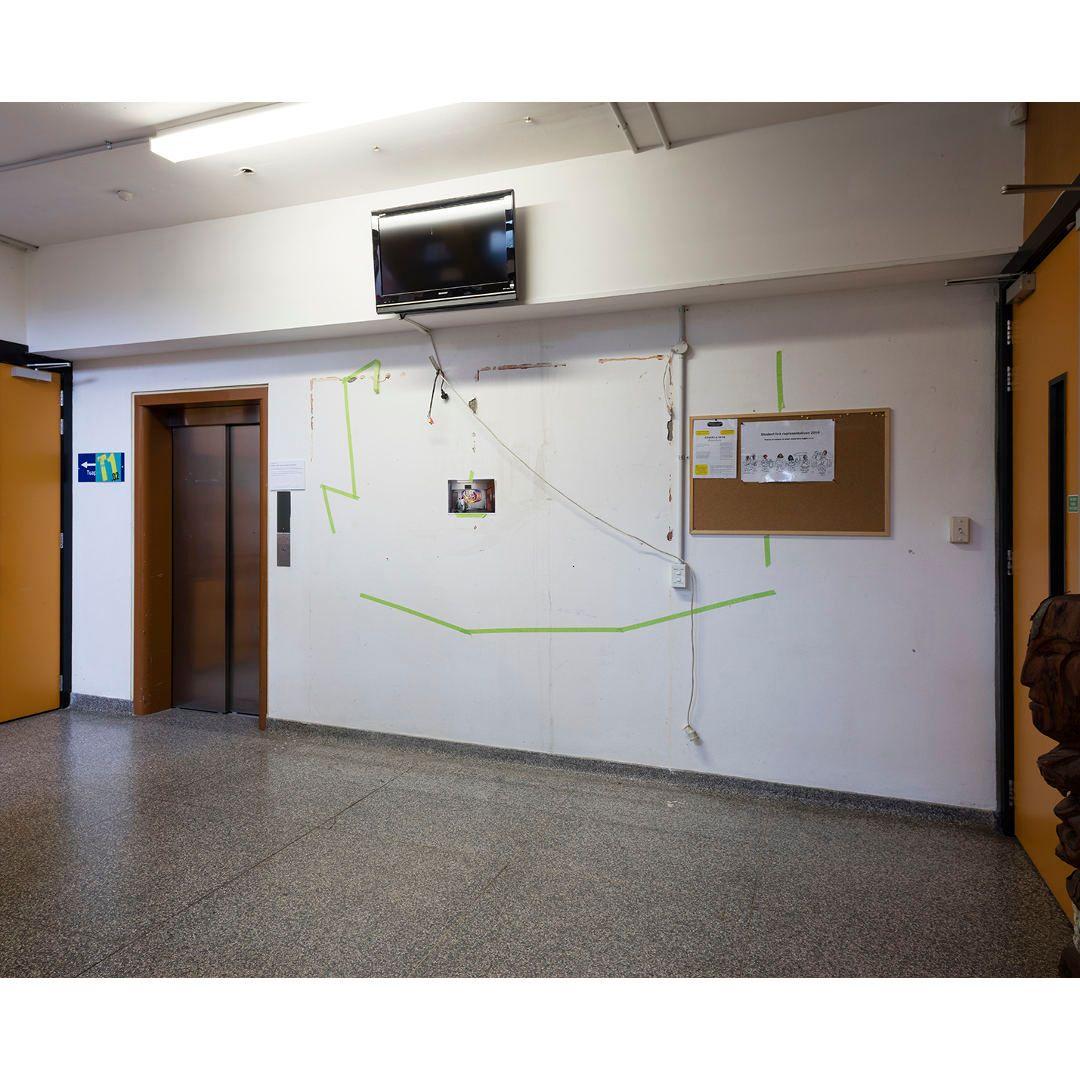
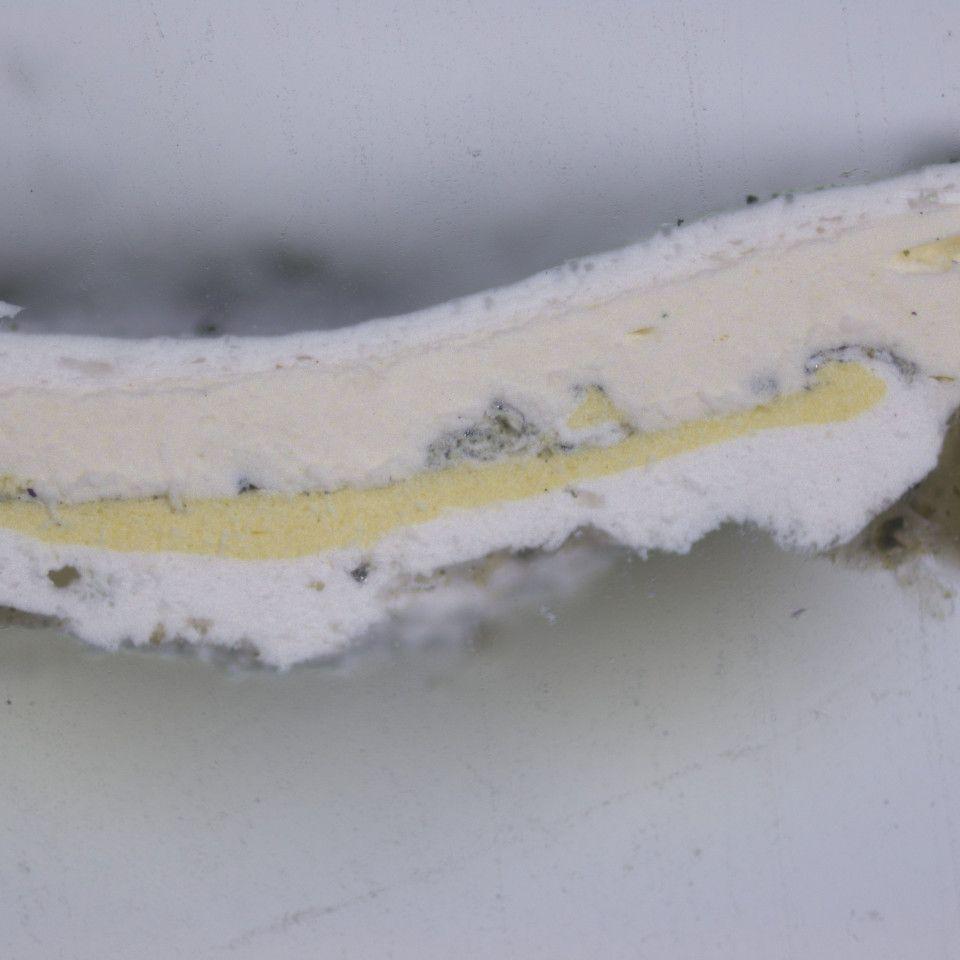
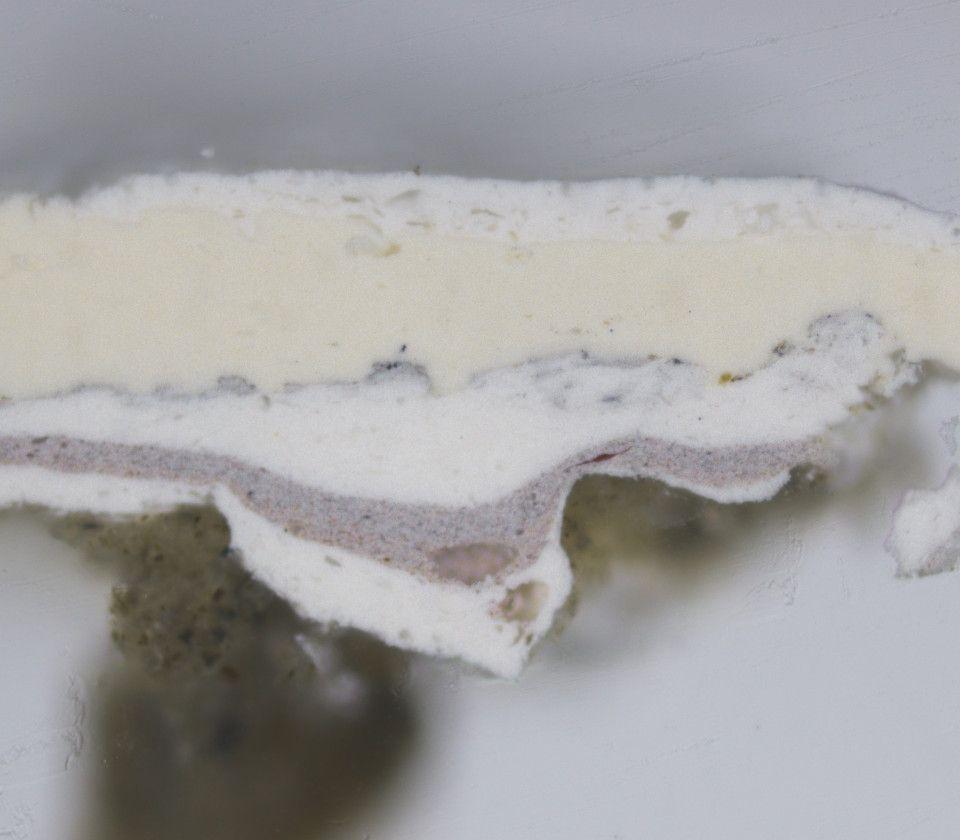
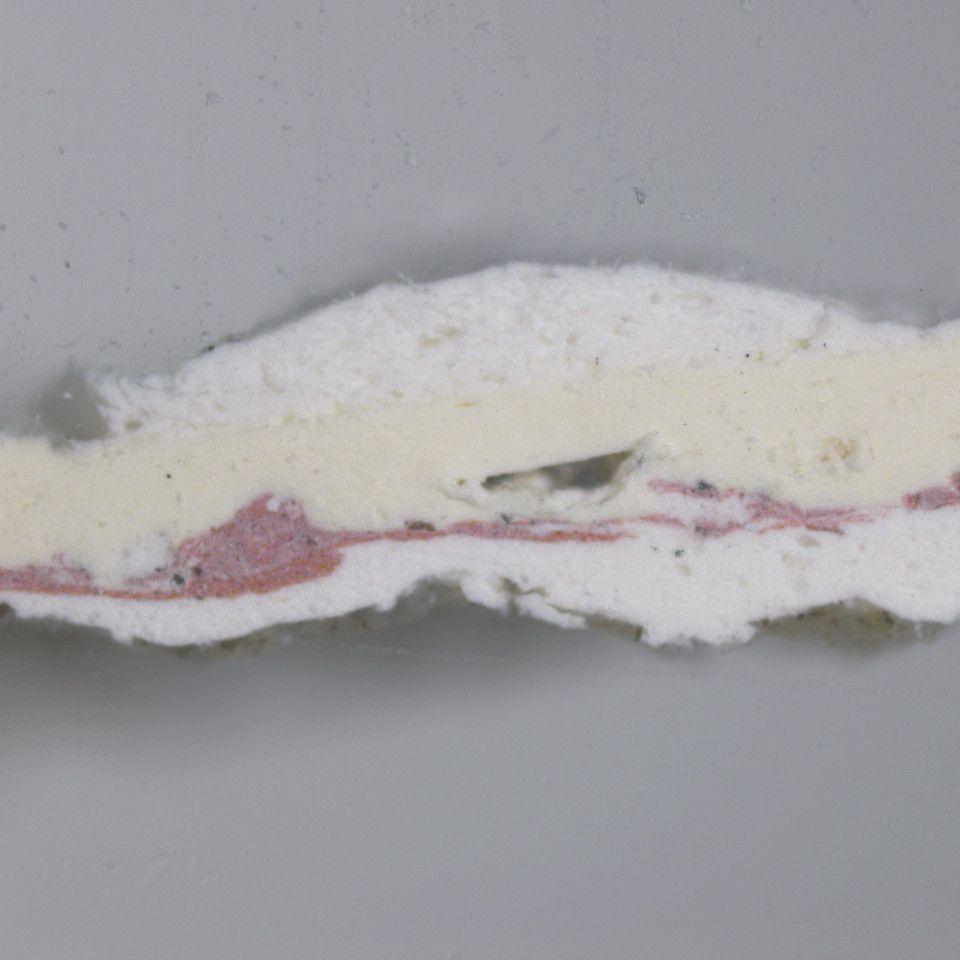
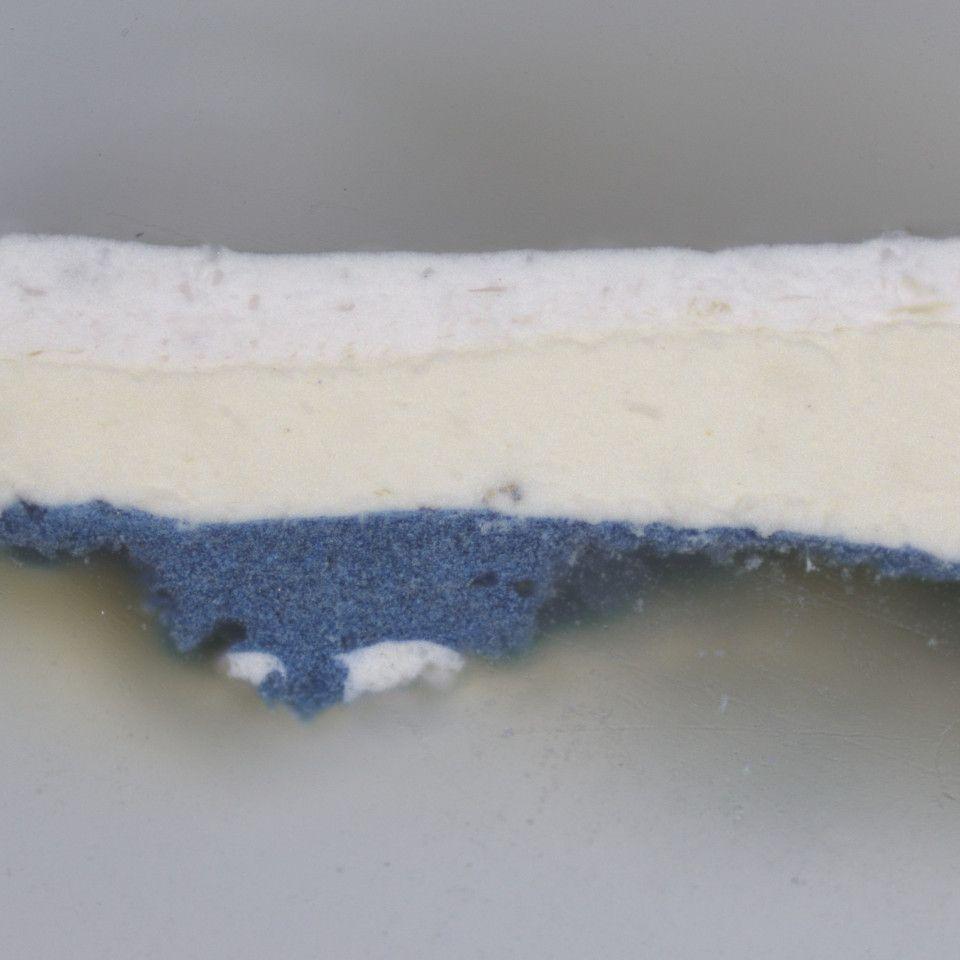
- DETAILS
- MAP
Description
In the early 1960s Government Architect F. G. F Sheppard and the Director of the New Zealand Soil Bureau commissioned E. Mervyn Taylor to create a mural for a new modernist building they were developing for the park-like grounds of the Department of Scientific and Industrial Research agency in Lower Hutt.
As his subject, Taylor chose the Māori kō ceremony associated with kūmara planting, and spent many hours familiarising himself with this ritual. The painting depicts a carved stone taumata-atua (stone representation, lit. ‘resting place of the gods’) placed at the head of the plot while a cloaked rangatira (chief, high-ranking individual) performs his early morning ceremony turning the first sod with his kō (wooden implement for digging). Lined up, waiting to carry on preparing the plot, are further diggers with their kō at the ready. Other workers use the timo (wooden grubber) to further break up the soil.
As Bryan James writes in his book E. Mervyn Taylor : Artist: Craftsman (Steele Roberts, 2005):
Ceremonies associated with [kūmara planting] were still being performed by Maori, and Taylor spent many hours familiarising himself with tribal life and ritual. […] Nothing like these murals, where Maori featured so prominently and were given equal status with European New Zealanders, was being created in New Zealand at this time; nor had they previously been sought for large public buildings. As a contemporary remarked, Taylor could if he had wished have chosen to depict a Pakeha farmer driving a Massey Ferguson tractor; such an image would have been far more widely accepted by Pākehā as typically New Zealand. […] His knowledge, already extensive, of Maori art and tradition continued to expand and he found his reputation and standing growing in both Maori and non-Maori communities.
In its contemporary setting, Taylor’s intent for this mural was to connect two worlds: that of the Maori horticulturist, who knew the soil resource intimately, and that of the soil scientist, whose task was to extend learning and knowledge of the soil resource for the benefit of the people.
With the restructuring of Government departments in the early 1990s the Soil Bureau was rolled into a Crown Entity. The building was tenanted by a new group and at some stage the mural was painted over. This was confirmed when conservators from the Museum of New Zealand Te Papa Tongarewa examined and tested paint samples from the wall in 2016. While removing the paint to uncover the mural was not possible at this point in time, technological advances may enable it to be uncovered in the future.
The National Film Unit episode of Pictorial Parade No. 128: Hutt Science – Patron of the arts, features footage of E. Mervyn Taylor at work on the mural.
In April 2016 the E. Mervyn Taylor Mural Search & Recovery Project team visited the former site of the Taita Soil Bureau with paint conservators Linda Waters and Tijana Cvetkovic from Te Papa Tongarewa Museum of New Zealand.
The conservators used infra-red technology to scan the wall on which Taylor’s mural was painted, hoping to find traces of the work. A paint sample was also taken, and later analysis has revealed promising signs that the mural is still there, hidden under layers of whitewash.
Callum Davies and Max Schleser made a short video of the visit. Callum is a former student, and Max a former Senior Lecturer, at Massey’s Te Rewa O Puanga – the School of Music and Creative Media Production.
The team revisited the site in October 2016, and Lynn Freeman of Radio New Zealand National. The building is now home to The Learning Connexion School of Creativity and Art and they had kindly moved some large display cabinets to allow us to access the full wall where the mural was once visible.
Lynn Freeman recorded the experience: listen to it here.
Linda Waters has also written two blog posts giving detail around some of the techniques used in hunting for the mural. The second post explains that the mural is unlikely to be recoverable with present-day paint removal technologies:
In 2023 The Learning Connexion produced and installed a digital image of the work in its original location in the foyer of the Taylor building. The reproduction was unveiled on Tuesday 19 September 2023.
